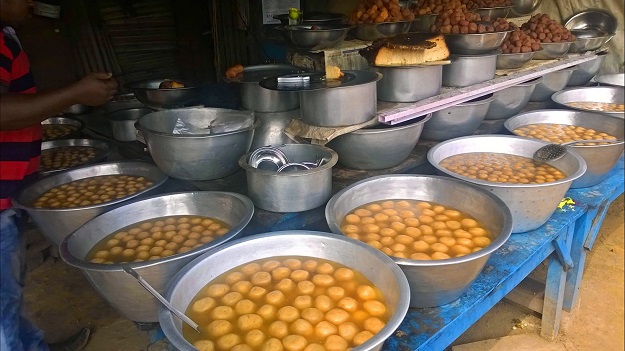As Daniels came to judgement over rasogolla,Bengal‘s pride sat right in the middle of the room, quite nonchalant of the goings on. Beside her sat her cousins, sitabhog and mihidana and rice specimens Tulaipanji and Gobindobhog. They are all waiting for their prized tag, that will catapult them as “novelties” in the eyes of the world. When they win the tag, each product will carry a specially designed logo and all producers adhering strictly to the certified process of production will be allowed to use this GI tag of authenticity.
A team of experts from the Geographical Indications Registry office, Chennai, was in the city to examine the claim of the state for GI tags for these products. They spent the maximum time over rasogola, which is facing a tough fight from Odisha with the latter claiming to be the inventor of the sweet. However, laying most fights to rest, the state has said that it has no competition at all with Odisha’s Pahala Rasogola or Khirmohan and has registered its claim under the name Banglar Rasogolla, which has a completely different production process.
At the end of Monday’s examination, sitabhog and mihidana reached their final stage of progression towards bagging the GI tag. The team, led by GI examiner Prashant Kumar and assistant registrar of trademarks, Chinnaraja Naidu, expressed their satisfaction over the documentation and technical details over production of these two sweets. “They will now put these out on public domain on their website for people to react and comment. After a reasonable period of time, which is a couple of months at the most, if no objection comes from anywhere, the two sweets will be given the GI tag,” said Reena Venkataraman, secretary of the state science and technology department.
Though the team expressed their satisfaction over the documentation done for Banglar Rasogolla, it will still have to give greater details on the range of the viscosity of the sugar syrup in which the roundels are kept, details on the range of its texture and sponginess among other things, said officials of the patent office of the state science and technology department. Members of the Mistanna Byabasayee Samity were invited to attend the examination process of the sweets and give their views, if asked. Among those who attended were Dhiman Das, of the KC Das family, which has been included for the contribution of Nabin Chandra Das towards the invention of rasogolla. Food historian Haripada Bhowmick was also present at the hearing. “The experts appreciated how we traced the rasogolla right from Sri Chaitanya‘s times when it was called chana bora to golak, then golla and finally rosogolla in 1865,” Bhowmick said.
In an effort to prove that Bengal’s rasogolla is different from Orissa’s Pahela Rosogolla or kheermohon, the latter two specimens were also reportedly presented to the experts, though they refused to include this variety as part pof Monday’s investigation. “The team has done a thorough examination of Banglar Rasogolla and will send us an examination report giving details of where we need to pad up the information that we have provided. Once we do that, this product will also be put up in the public domain. If no objections come, Banglar Rasogolla will also get the GI tag,” Venkataraman said.
The team was quite satisfied with the tulaipanji and gobindobhog varieties, under the non-basmati aromatic category and these will also be put up in the public domain soon. Happily, the Parliament had recently accepted these varieties as Bengal’s original produces and hence it will be a cakewalk for them to bag the tag.
First published in Times of India Here

